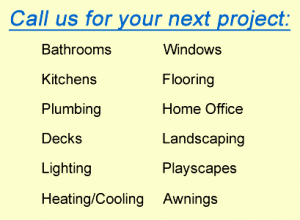Is your website hiding in plain sight?
Looks can be deceiving
So your website looks good to you and your visitors. That’s great. But how does it look to search engines? If your website is like most, a many of your visitors access your website from a link on a search engine results page – or “SERP”. A search engine can’t point people to your site if it can’t find your site to begin with. My job is to build your website in ways that make it easy for search engines to find it.
But many website owners don’t recognize how their website may be making it harder (or even impossible) for search engines to discover them. One way to frustrate search engines is by the use of images. Images play an important role in making your website more discoverable by search engines. But there are many ways that images can have the opposite effect.
Let me illustrate
I’ll give you an example that I see often. Some websites will have a list of products, services, or other text. That makes total sense. But they create the text with a graphics program and save it as a graphic image. They post that image on their website. By creating this with a graphics program they get full control over color, fonts, sizes, and more. Here’s an example:
Question: So what could be wrong with this picture? Answer: You and I both see text. But search engines only see it as an image. And they have no idea of how to actually interpret the image. Search engines only “read” text. And an image of text is not text. To the search engine, this picture may just as well be a photo of your new baby or an image of the New York Times crossword.
You may still be wondering what the problem is as long as PEOPLE can read it. After all, that’s the most important thing, right? Not exactly. Consider this: Your website text, graphics, and search engines need to work together if you want results. Let’s say that your website is sprinkled with text content pertaining to most of the items in the above image. But there’s little or no mention on your site about awnings or playscapes. Search engine robots crawl through all websites on the internet and index what they find. They look at all the pieces of a website and try to make sense of it. They figure out what your website is about based on the content – Pages are mostly text and they are given a file name (also text). There are headings, titles, paragraphs, captions, and more. Those are also text. There is also text that you don’t see – page descriptions, keywords, tags, and more. Often there are images, videos, downloadable files, and audio. But the robots only know these from their file names, captions, associated descriptions, and so on. But then those come down to text also.
So for someone using a search engine to find help with building a backyard playscape or repairing an awning, the above image won’t do much to draw traffic to your website.
Am I saying not to use images on your website? Certainly not! Images can be extremely important. But you need to use all the different elements of a website in a way that they will work together to draw traffic. I’ll give you some guidelines on how to make your images and text play off of each other for search engine optimization in an upcoming post. Instead of your website hiding, it will be saying, “I’m right here and I have what you’re looking for.”
